
Iran
Located in southwestern Asia, Iran has a long and rich history and a proximity to many Asian and Arab countries, all of which has influenced its flavorful cuisine. Grab your kids and let’s learn about Iran!
QUICK STATS
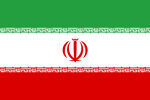
Located in southwestern Asia, Iran is bordered on the north by Turkey, Armenia, Azerbaijan, the Caspian Sea, and Turkmenistan; to the east by Afghanistan and Pakistan; to the south by the Persian Gulf; and to the west by Iraq.
A brief history for kids to learn about Iran
What do you know about Iran? Probably not much. Except for its Islamic regime and mandatory hijab (which are both unfortunately true).
Now, what would be your reaction if I tell you that this same country is home to one of the oldest civilizations on the planet? Or that the world’s first charter of human rights was made in Iran 2500 years ago? Or that the world’s first skull surgery was done in Iran 4800 years ago?
Surprised? Don’t be! Iran is an ancient country and the land has been witness to numerous wonderful events.
So if you and your kids are interested in learning more about the history of Iran, we need to journey way back, to thousands of years ago, to the first days of mother Iran (Iran is a feminine given name).
Iran or Persia?
Iran is so old that its very beginning moments have given birth to legends and myths of the “Book of Kings” (or “Shahnameh” in Persian). This book written by Ferdowsi is the longest epic poem in the world.
Iran’s name refers to the first occupants of the country, the Aryans. For many years historians believed that these Aryans had migrated from other parts of the world to Iran, until new evidence and research proved that wrong.
You may be confused now. If “Iran” is such an old name, then why was the country formerly known as Persia?
Persia is the name the West used for referring to Iran.
Historically this country was known as Iran. That’s why in 1935, Reza Shah, the king of Iran, requested to change it, to make the West use the real name of the country. The coins and heritage left by the ancestors of this land, refer to the country only with its present name “Iran”. (This name dates back to at least 2000 years ago.)
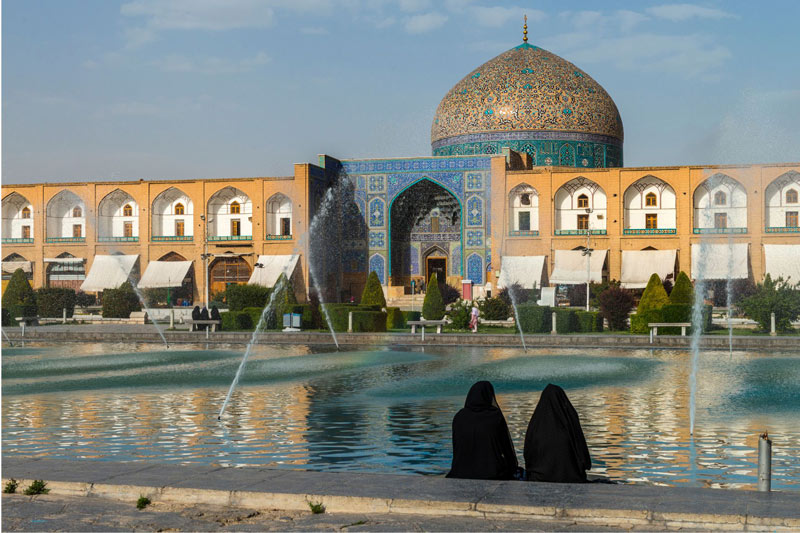
A Glimpse at Iran’s History
40,000 years ago, the first inhabitants of the land engraved drawings on the caves of the west of the country, in Khomein, Markazi Province. (Historians recognize these drawings as the world’s oldest rock etchings.)
8,000 years ago saw the dawn of urban civilization in Iran and probably in the world with Susa city. (This is one of the oldest cities in the world.)
5,000 years ago (around 3200–2350 BC), the mysterious civilization of the burnt city (Shahr-e Sukhteh in Persian) was founded. This city was located in the east of the country, in Sistan and Baluchestan Province. The inhabitants of this mysterious city operated the first skull surgery and also the first ocular prosthesis in medical history.
A synchronous ancient city named Jiroft existed in the west of the country. This old city is of high importance for historians because of its unique writing system and art crafts.
2,500 years ago (around 550 BC), Cyrus the Great founded the Persian kingdom. This kingdom was the largest empire the world had seen at its time. When the army of Cyrus conquered the city of Babylon peacefully, the king, Cyrus, freed all the slaves and gave people the right to choose their own religion. He also declared all races living under Iran’s roof needed to be treated equally. His commands are recorded on a baked clay cylinder (known as the Cyrus cylinder) which historians recognize today as the world’s first charter of human rights.
1,300 years ago (633 AD) saw the Muslim conquest of the Persian kingdom, the decline of the Zoroastrian religion, the massacre of the Iranians, and the Persian language on the brink of fading away from existence.
Thankfully, the poet mentioned above, Ferdowsi, preserved the Persian language by spending 30 years of his life writing his book “Shahnameh” (940-1012 AD).
After this conquest, different dynasties governed the country for more than 1300 years. Some made it more vulnerable, some stronger (although never as strong as it was before).
100 years ago, the Pahlavi dynasty (the last Iranian royal dynasty) preserved the country one more time in history and did its best to make it more powerful and democratic (1925-1979).
45 years ago (1979) saw the Islamic Revolution and the rise of the Islamic Republic regime which left the country vulnerable and weakened one more time.
Fun facts about Iran for kids
- Iranians are not Arabs. Only a trifle of Iran’s population is Arab (3-4%). Other ethnicities like Persian, Lor, Kord, Balouch, and Azari form the majority of Iran’s population.
- Iran has its own solar calendar and the weekend days in Iran are Thursday and Friday.
- Although drinking alcohol is illegal in Iran (since the beginning of the Islamic regime), people still consume it. Before the Islamic regime, Iran produced its own brand of wine, entitled Shirazi wine, which was very popular.
- Iran is a main producer of saffron, pistachio, caviar, and carpets.
- One of the most popular pedigreed cat breeds in the U.S.A. is the Persian cat.
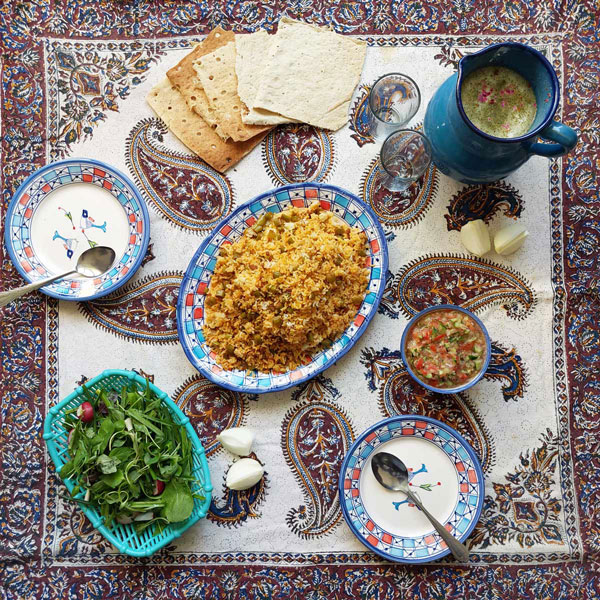
Iranian food
The cuisine of Iran is mostly meat-based. The most popular Iranian dishes have some sort of meat in them, almost always lamb or chicken.
Another major staple of Iranian cuisine is rice. It is part of all Iranian lunch tables. People serve it with stews, kebabs, etc.
In Iranian cuisine, there are six main types of dishes: polo (rice), khoresht (stew), abgoosht (stew), ash (soup), kuku (frittata), and kebab (grilled meat).
In English, both khoresht and abgoosht translate as ‘stew’. But in Persian, they use different names for them. They consider them different dishes that belong to different groups because of the way people eat them. Iranians always serve khoresht with polo (rice), while they eat abgoosht with bread.
Most families serve on the ground arranged on a large, beautiful, multi-colored, Iranian tablecloth.
Each province in Iran has its own local dishes and sweets. For instance, Isfahan is famous for its sweet gaz (Persian nougat with pistachios). The Yazd province is famous for ghotab (a sweet pastry with a nut filling). In Shiraz they have masgatai (a soft and transparent, pudding-like confection with nuts).
Iranians enjoy not just the sweet taste but also the sour. Many sour snacks like lavashak (fruit leather) and ghara (a sour brown solid snack made with yogurt) are among the most popular sour snacks in Iran.
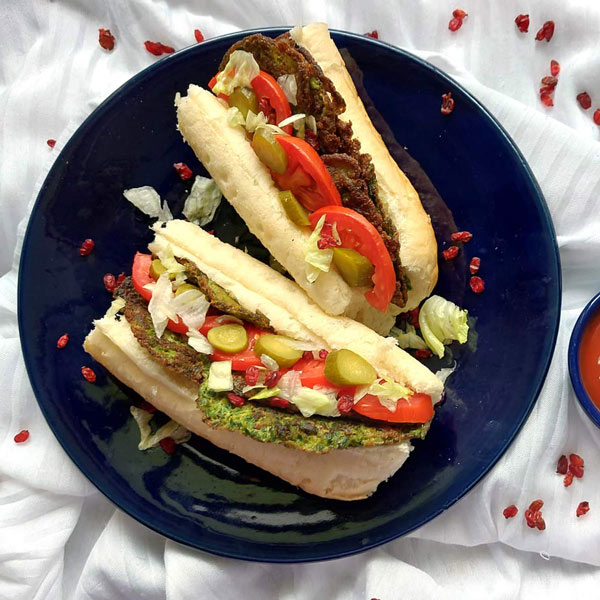
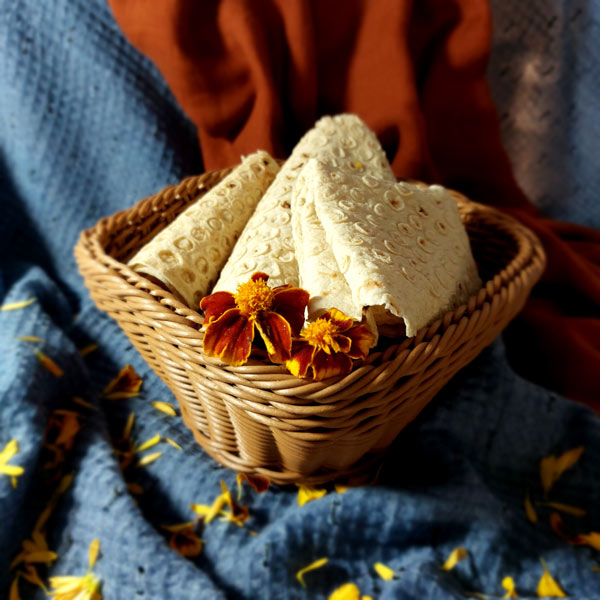
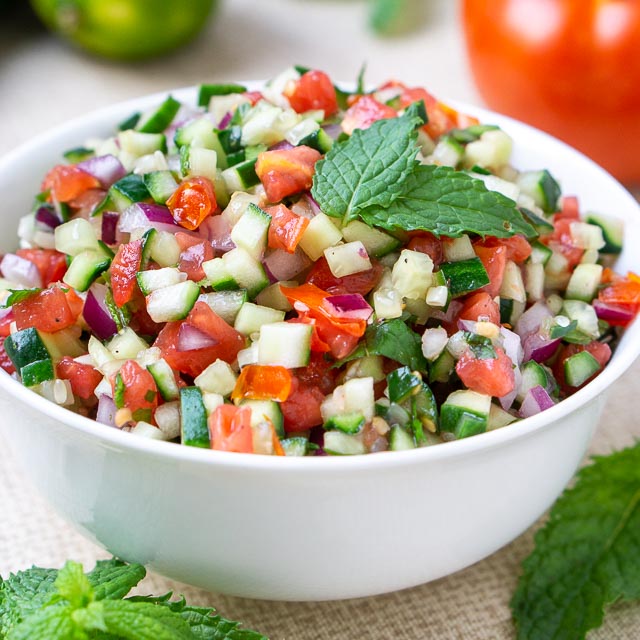
What do Iranian eat? Mealtime in Iran.
Iranians eat three meals a day: breakfast, lunch, and dinner. And among each meal, they drink a gallon of tea!
Maybe not a full gallon, but black tea is the most popular drink in Iran and people drink a lot of it every day.
Even in the hottest hours of the hottest days of the year, people enjoy a cup of tea with their families.
Breakfast (صبحانه [sobhaneh])
Iranians often serve breakfast between 7 to 9 am. A typical Iranian breakfast often consists of bread, pieces of cheese, sliced tomatoes and cucumbers, walnuts, and dates, along with a cup of tea.
Another option is to serve tahini with date syrup. Iranians mix the two and spread them on a piece of bread to serve with tea.
Another option is to serve a tomato omelet with bread, and again, black tea.
Other dishes that Iranians often serve for breakfast are fereni (rice pudding), ashe shole ghalamkar (a thick soup made with different beans and herbs), and adasi (lentil soup).
Almost every breakfast in Iran is served with bread and a cup of tea.
Lunch (ناهار [nahar])
Iranians serve lunch between 12 to 2 pm. It’s the biggest meal of the day. Lunch always comes with an afternoon nap in Iran. Almost all stores and shops stop working from noon until 4 to 5 pm to have lunch with their families.
In Iran, lunch is often a meat-based dish (stew or grilled) served with polo (cooked rice), bread, herb salad, and doogh (a yogurt-based drink).
Dinner (شام [sham])
Dinner in Iran is often served between 8 to 10 pm. A lot of families prefer to have a light dinner called hazeri. Hazeri refers to anything that doesn’t need to be cooked, like a cheese sandwich made with herb salad, nuts, cheese, and lavash bread, just like breakfast.
Some others prefer to cook more food for lunch and have it for dinner too.
Another option for dinner is to have fast food.
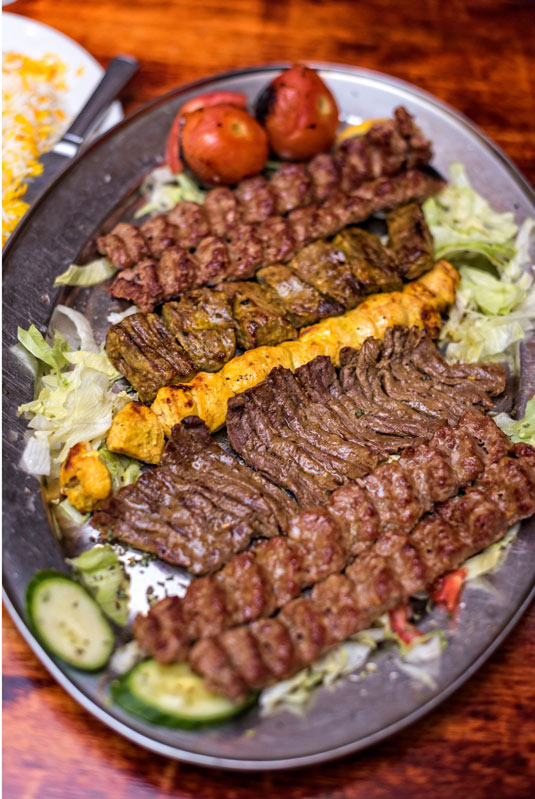
A few main dishes
While main lunch dishes can vary between household and region, here are five Iranian meat dishes that are widely popular. Try some with your kids and learn about Iran by creating an Iranian meal set!
Jujeh kebab – This is an Iranian chicken kebab. Small pieces of chicken are marinated in lemon juice, sliced onion, black pepper, salt, and of course saffron. After a few hours, it is grilled and served with bread, herb salad, pieces of raw onion, and grilled tomato.
Beryani – This is a traditional Iranian dish of Isfahan in central Iran. Beryani is fried meat served with bread, herb salad, pieces of raw onion, and grilled tomatoes.
Koobideh kebab – Another grilled meat dish (kebab), this is a meat kebab of minced lamb meat, grated onions, and different spices. After grilling, it is served like all kebabs, with bread, herb salad, pieces of raw onion, and grilled tomatoes.
Khoresh ghormeh – This stew (khoresht) is an Iranian herb stew. It is made with different herbs (chives, Italian parsley, coriander) and small pieces of lamb meat. It is served with polo (rice).
Khoresh gheymeh – This Iranian stew is made with split peas, potatoes, and small pieces of lamb meat. Like all other Iranian khoresht (stews), it is served with polo (rice).
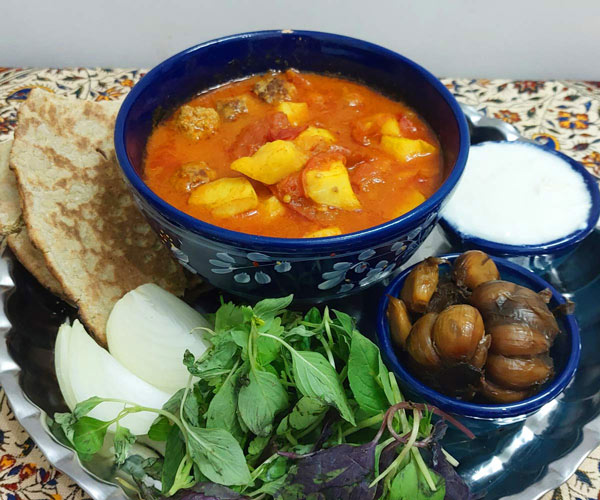
Food etiquette in Iran
When you are invited to dinner or lunch in Iran, it is impolite, like many other countries, to arrive at the mentioned time. It is thoughtful to arrive one hour earlier to help the host arrange the table, prepare the salad, etc.
Another polite thing to do when dining in Iran is to bring a small plant, a small gift, or a small box of sweets when invited to someone’s house for the first time.
Another important thing to know about Iran is tarof. This one is often confusing for tourists and even sometimes for ourselves too.
Tarof is a polite gesture, a way of being more polite to others. Simply put it means making yourself appear secondary in comparison to your guests and insisting on putting them first. For instance, when entering somewhere you hear people say “You first please” followed by “No after you”.
Or you may hear “Would you like a cup of tea?” followed by “No, thanks. I won’t bother you.” (even if they really would like to have a cup of tea), followed by “Don’t even mention it. I will bring you some.” and they do.
After everyone finishes eating, it is polite to help the host with the cleaning.
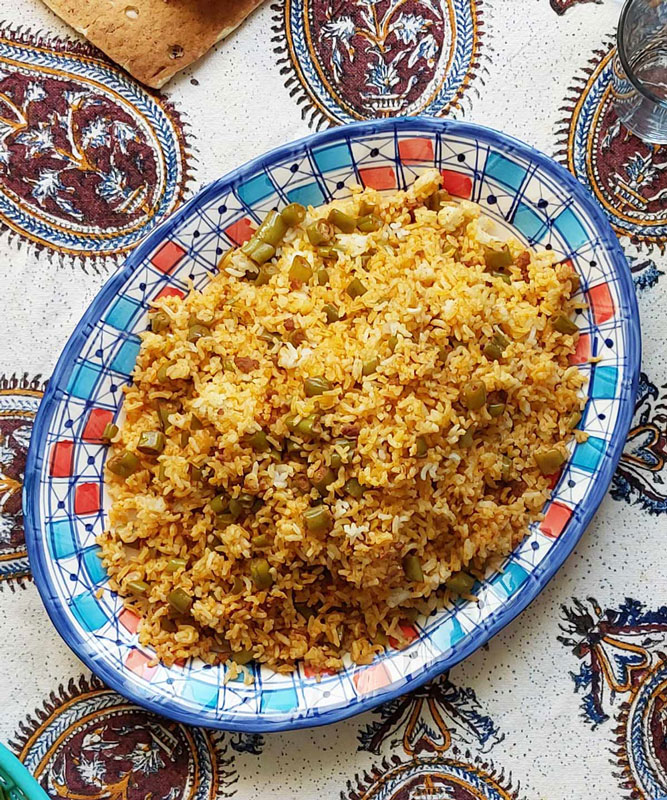
Holidays in Iran
Discussing holidays is a great way for kids to learn about the culture and history of Iran.
Hundreds of years ago, in Iran, each day of the month had a special name. For instance, the first day of the month was Hormozd, the second day was Bahman, the third day was Ordibehesht, etc.
When the name of the day and the month would match, a big ceremony would happen all over the country.
For instance, the name of the first month of the year in Iran’s solar calendar is Farvardin and the 19th day of the month is also named Farvardin. So on the 19th of Farvardin, Iranians used to have a big holiday. And so, in ancient Iran, there were at least 12 holidays.
To this list, other holidays were added, like New Year’s Eve, Chaharshanbe Suri, Yalda, Sizdah Bedar, and Sadeh.
Unfortunately among all these holidays, only five of them have survived.
Four of them (New Year’s Eve, Chaharshanbe Suri, Sizdah Bedar, and Yalda) are celebrated all around Iran. And one of them, Sadeh, is celebrated only in some parts of Iran.
To this list, you can add religious eves too. Among all Islamic eves, only one of them is widely celebrated in Iran which is Nime Shaban, and even that is not as popular as eves (the night before) national holidays.
Chaharshanbe Suri (چهارشنبهسوری) (Wednesday Festival, roughly the last Wednesday before March 21)
The last Wednesday of the year is celebrated widely in Iran. The word Chaharshanbe, in Persian, means ‘Wednesday’, and the word Suri means ‘festival’. Therefore, Chaharshanbe Suri means the ‘Wednesday festival’.
This festival dates back to at least 1700 B.C. and has Zoroastrian origins.
On that Wednesday night people ignite a fire and circle around it with their families and friends. People jump over fire and sing: ” Zardi-ye man az to, sorkhi-ye to az man”. Which means “May your redness be mine, and my paleness be yours.”
In Iran, fire is a symbol of purity and wisdom. And the red-colored flames of fire are a symbol of health and happiness and so that’s why fire is an important element in many Iranian festivals.
Marsa polo (made with rice, chicken, almond slices, pistachio slices, saffron, and barberry) and reshteh polo (made with rice, rice noodles, onion, raisin, and chicken) are among the most important foods of this festival.

Nowruz (نوروز)(Iranian New Year, First day of spring, roughly March 21)
Nowruz is the celebration of the new year in Iran. It is the most important holiday in Iran, which lasts for almost two weeks.
Based on Iran’s solar calendar the new year starts in the spring when nature revives itself. It takes place on the vernal equinox and marks the first day of spring. (Typically it falls on or around March 21st on the Gregorian calendar.)
There are many traditions associated with this holiday. People clean their houses from top to bottom. They buy new clothes and furniture, and decorate their houses with flowers. The elders give money (eidi) to children as a gift. And for twelve days people go to their family’s and friends’ places to visit them.
The host welcomes the guests and offers them fruits (often apples, oranges, kiwis, bananas, and strawberries) along with ajil (a snacking mixture of nuts like pistachio, almond, peanut, cashew, hazelnut, and Japanese seed), a cup of tea and sweets. (Sweets like shirini keshmeshi – raisin cookies.)
On the first night of the year, people cook sabzi polo mahi (a dish of rice, vegetables, and fish). Shirin polo (“jeweled rice”, a sweet rice dish with citrus, carrots, almonds, and raisins) is another popular dish for Nowruz.
Each family prepares a table with seven symbolic items on it. This table is called “Haft Seen“. The major items of this table are: an apple (symbol of health), sabze (sprouted wheat grown in a dish that symbolizes nature’s rebirth), coins (symbol of wealth), vinegar (symbol of patience), samanoo (a sweet wheat paste that is a symbol of power), sir (garlic, a symbol of cleanness), and Russian olives (symbol of wisdom).
Sīzdah Bedar (سیزدهبدر)(Nature’s Day, roughly April 3)
This is the final day of the Nowruz holiday, celebrated on the 13th day of Farvardin, the first month of the Iranian calendar. On this day people go to nature with their friends and families and spend a pleasant time together.
Juje kebab (grilled chicken) is the traditional food of this day.
Yālda Night (شب یلدا)(Winter Solstice, roughly December 21)
Yalda is the celebration of the longest night of the year in Iran (it’s only one minute longer than other nights of the year). It marks the winter solstice and typically falls on or around December 21st on the Gregorian calendar.
Night and darkness in ancient Iran were the symbols of evil. And so, Iranians would get together with their families, waiting for the light to come back and fight back the evil.
During this ancient festival, Iranians gather to eat watermelon, pomegranate, and ajil (a mixture of different nuts). And they listen to the stories of the Shahname (“The Book of Kings”) and the poems of Hafez. (See our “At home activities for kids to learn about Iran” section below for some recommended translations of these works.)
Sadeh (سده) (Midwinter Festival, roughly January 30th)
This is a very old Iranian festival in the honor of fire. On this day Iranians celebrate the discovery of fire.
This midwinter festival is held on the 10th of Bahman (on or around January 30th on the Gregorian calendar). Sadeh means 100, and it refers to 50 days and 50 nights left until Nowruz and the beginning of spring.
The special food of this night is mung bean soup with garlic bread.
Nim Sha’ban (نيم شعبان)(Mid Sha’ban, early March)
This Muslim holiday falls on the eve of the 15th of the month of Sha’ban. This is the birthday of the last Imam, “Mahdi”, in Islam. He was the last of the twelve leaders after Muhammad, who they believe will come again to restore justice on earth.
Muslims all over the country, celebrate this day with doogh (a yogurt-based drink) and Goosh-e-fill (a fried pastry).

At home ideas for kids to learn about Iran
As a part of your homeschool Iran unit study or as a supplement to your child’s Middle East unit at school, try some of these ideas at home to bring in hands on lessons when your kids learn about Iran!
- Celebrate Nowruz and the beginning of spring. Have your kids make their own Haft seen table and enjoy some fruit, nuts, and Iranian treats while they learn about Iran and Nowruz.
- Celebrate the winter solstice, Yalda, with a poetry reading night. Don’t forget the pomegranate, watermelon, and nuts! Older kids may be able to tackle reading some of the epic poem “Shahname” or some of Hafez’s poems. For younger kids, “The Phoenix of Persia” by Sally Pomme Clayton is a beautiful retelling of a story from Shahname. And for slightly more mature younger kids, Elizabeth Laird has a retelling of many of the stories from Shahname. Reading these historic writings is a wonderful way for kids to learn about the culture and history of Iran.
- Use Language Drops to learn a few words in Persian or Word Hippo to look up the pronunciation of specific words.
This article was contributed by Zari, a Persian travel and food writer whose goal is to show the real Iran to kids and adults around the world through the lens of food. You can find her on LinkedIn.

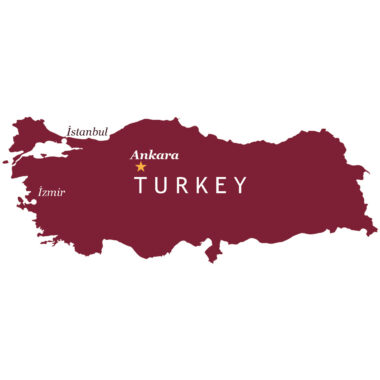
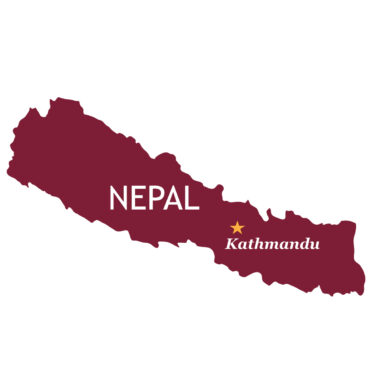
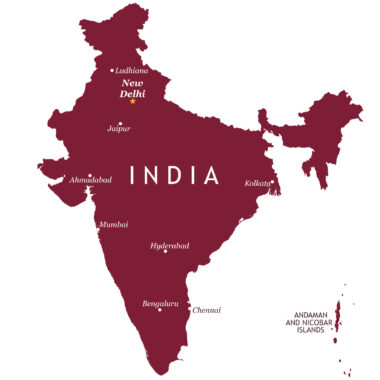


Have a Question/Comment?